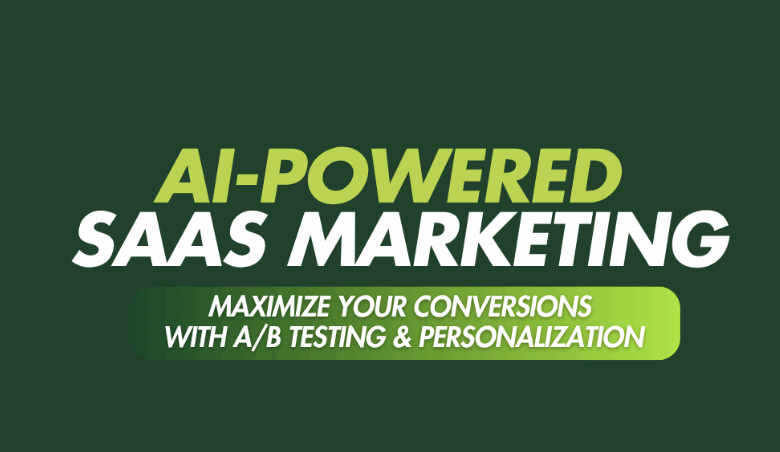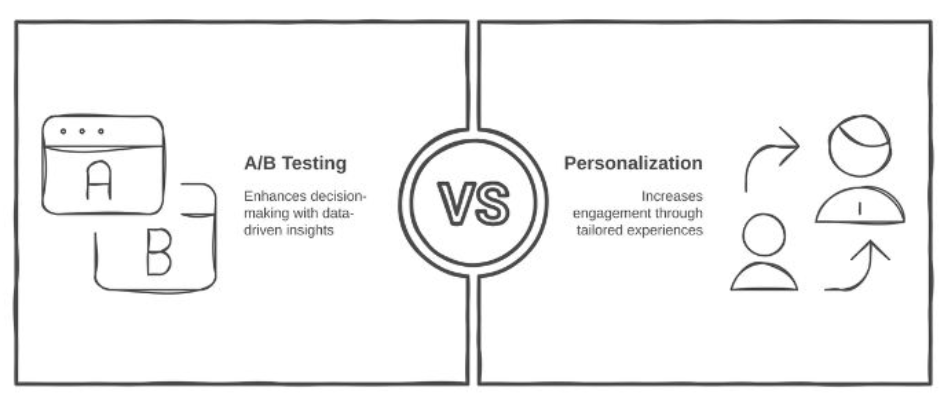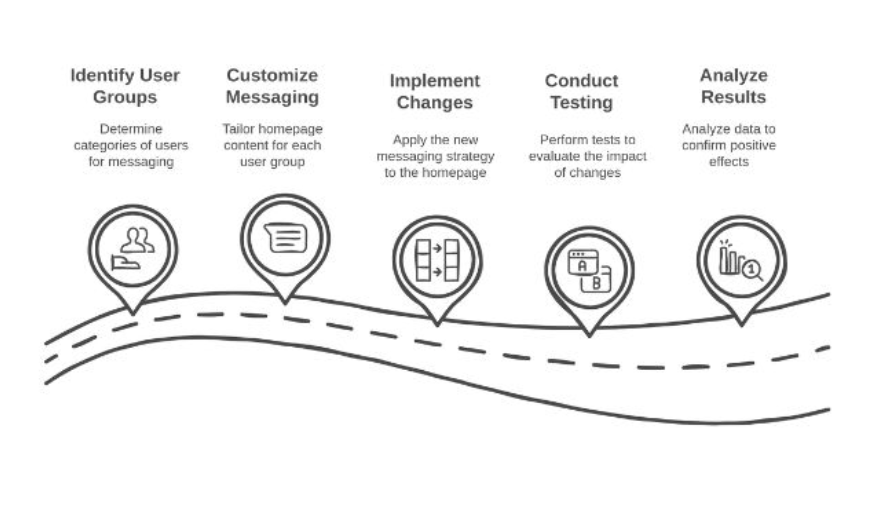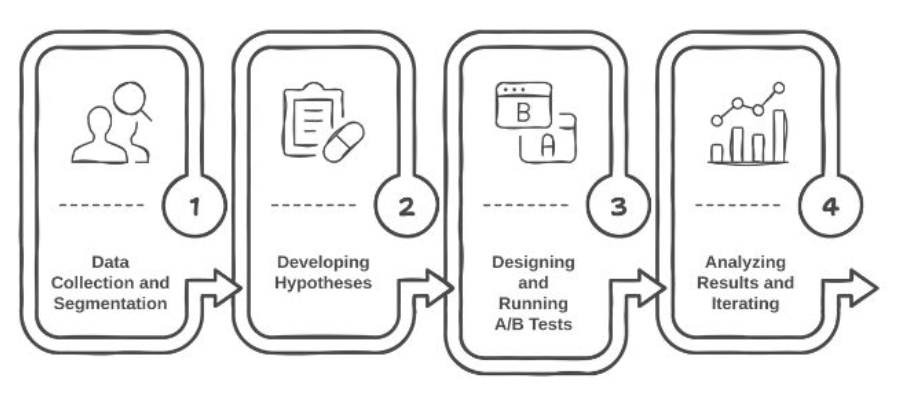
Think of a situation where your website is enjoying consistent traffic. Users are clicking ads, visiting your website, and scrolling through some of its pages until…nothing! They leave without registering, making a purchase, or even engaging with some content. Quite frustrating, isn’t it? You go on and tweak the design or maybe the headlines or test different CTAs until the needle moves quite minimally. This problem may not just stem from what is on the page; it derives from how relevant and engaging the experience feels to each visitor. This is where Conversion Rate Optimization (CRO) comes into play.
The whole idea of CRO is to ensure that your website is not just providing a welcome mat for visitors, but rather turning them into paying customers. The best way to accomplish this? Data, not guesswork. Rather than guessing whether a new layout or a funky color on a button may be the trick, you must follow an organized process that tells you what really strikes a chord with your audience.
A/B testing and personalization are two of the most powerful tools for CRO. A/B testing is the process of comparing two or more versions of the same content to determine which performs better. On the other hand, personalization makes every user’s experience more relevant based on their past behavior and preferences. Although each makes for a powerful tool on its own, integrating both goes a long way toward enhancing CRO efforts.
In this blog we are going to explore how A/B testing and personalization together optimize smarter, engage users better, and improve conversion rates.
1. Understanding A/B Testing and Personalization
Having learned about conversion optimization, we will proceed to discuss two of the most successful strategies in improving conversion rates-namely, A/B testing and personalization. Both matter in terms of effective user experience optimization, but put together, they are able to create a conversion optimization powerhouse.
I. A/B Testing: Making Data-Driven Decisions
A/B testing compares different versions of a web page, e-mail, advertisement, etc., to identify the best-performing one among them. Traffic is split between the competing versions and the results are analyzed for higher user engagement, sign-up, or purchase for any given version. This decision-making process is based on facts rather than guesswork.
Suppose a SaaS company sells project management software and its marketing team is not sure if the button saying “Start Your Free Trial” will convert more users than that saying “Get Started Today”. Thus they ran an A/B test in which they split their visitors into two groups: one half saw the version with the first button and the other half saw the version with the second button. A few weeks later, computations were made on both variations, whereupon it was found that the “Start Your Free Trial” button had produced a 15% increase in registrations. Hence, they could be assured of the conversion with the winning variation and improve their returns.
A/B testing is one of the things most talked about in driving up conversion rates. As per Econsultancy’s report, 77% of firms with a structured approach to optimizing their conversions use A/B testing as their highly effective method for making marketing decisions.
II. Personalization: Creating Tailored User Experiences
While A/B testing shows what element works best in your content, minimal personalization customizes content and experiences for different users. Unlike showing the same webpage to all users, personalization helps users tailor their content according to behaviors, preferences, and demographics.
Consider a SaaS company, for example, providing services for an email automation tool. A first-time visitor to the pricing page might hit the CTA “Learn More About Our Features” when an already visiting client, one who has read the features, will find “Start Your Free Trial” instead. Personalization heightens relevance and engagement by completely addressing them based on where they are on their journeys.
Conversion rate optimization platforms are popularly used by many businesses to implement the same strategies at scale. These platforms allow marketers to tailor content, recommend products, and customize user journeys in real-time, depending on behavior and data. They work towards making the personalization efforts of SaaS companies more efficient and automated, allowing the user experience across each visitor to be more relevant. Additionally, a study conducted by Verndale showed that companies that focused on personalization rather than conventional testing achieved an increase of 33% in conversion rates. This clearly indicates the great impact of tailored experiences on the growth of companies.
2. Personalization & A/B Testing: A Winning Combo
The combination of both A/B testing and personalization forms a very strong optimization strategy that can be very resistant to the weaknesses of both approaches. A/B testing can test which content, design, or messaging variants work best across different user segments, while personalization adjusts experiences on the basis of a user behavior, preferences, and demographics. A/B testing alone cannot give insights into the user intent, and personalization without validation can lead to false assumptions.
Together, they use data-driven insights rather than intuition to enhance the effectiveness of marketing. Personalization should be validated through A/B experiments to find its true impact on user experience, engagement, and conversions. For instance, one possible example of an experiment would be to customize the homepage messaging of a SaaS company, such as for first-time visitors versus returning users. Implementation of the change is done only after extensive testing to confirm that it has a significant positive effect.
By constantly updating personalization factors based on feedback gathered through these methods, companies increase customer satisfaction and conversion rates. The increased user engagement in itself is a catalyst for improved user experience; end users see content that meets their needs, thus prolonging their stay on the site and encouraging further interaction.
3. Implementing a Combined Strategy
It starts by determining the understanding of synergies between A/B testing and personalization. The next step would be formulating a structured plan on what data to collect that will lead to hypothesis building, experiment setup, and continuous strategy refinement over time for maximum benefits gained from this method. In place, personalization will be based on informed decisions rather than data-supported assumptions.
I. Data Collection and Segmentation
The first step to efficient personalization is data collection. The ways in which user behavior, preferences, and demographics inform businesses to build relevant experiences across segments. Once a user has visited the website, factors such as purchase behavior, time spent on pages, and campaign response history help inform what engages different audience segments.
Once data has been collected, segmentation becomes one of the key activities for precision personalization. Rather than using a one-size-fits-all approach, businesses now split users into segments based on some common features. The segments may arise from geographical areas, device types, or browsing patterns, or they may characterize a specific point in the customer journey. When segmentation is done correctly, a business gives targeted experiences for a user’s specific need.
II. Developing Hypotheses
After the segmentation, the next step is to formulate hypotheses that can be tested. A hypothesis would state a particular expectation as to how such an individualized experience would affect behavior. These expectations should be based on knowledge obtained from tangible data, rather than mere assumptions.
For example, if data shows that enterprise users spend time on pricing pages but do not sign up, one could assume that loading an industry-specific case study would increase the likelihood of conversion. A strong hypothesis lays out a clear path for testing, while improving the measurability of the results.
III. Designing and Running A/B Tests
With a clear hypothesis in place, you can now create the A/B tests that will measure the effects of the various personalized versions you’ve created. Setting these tests calls for a certain form of planning so as to ensure efficiency in result generation. Some of these include the size of your sample, the length of your tests, and ensuring significant statistical results.
Perhaps the most important aspect of conducting A/B tests is testing any personalized experience against a control version to see what works better. Since testing too many variations at once can dilute results, concentrate upon only a few impactful changes for each user segment. At the same time, testing across other audience groups will allow the business to learn what works for each segment so they can tailor their approach to it.
IV. Analyzing Results and Iterating
Analysis of the results determines how effective the personalization strategy is once the test has been completed. A few metrics discussed here are conversion rates, engagement time, and click-through rates. It is through these metrics that the user reaction to the differing experiences can be inferred. Those personalized versions that have a better impact can be scaled up for wider executions. On the contrary, if no conclusion can be reached, modifications are made, and more testing is carried out.
The secret to success is continuous iteration. Personalization cannot be treated as a one-time act; it is an ongoing effort that increasingly incorporates user behavior as well as trends in the market. Companies that tirelessly analyze their test results and adjust their course of action accordingly elevate themselves far above their competition through continuous enhancements to their user experience. By conducting personalization as described above, one can merge personalization with A/B tests so that the process is oriented not only towards effectiveness but more importantly towards the customer.
Conclusion
By combining personalization with A/B testing, organizations can make decisions on the basis of real validated data and thus render a more relevant experience for the user. This has assisted companies in fostering greater user engagement, enhancing customer satisfaction, and escalating the conversion rates. The marketers and salespeople carrying out this approach will continuously refine their work, thus remaining ahead in this cut-throat competition.








